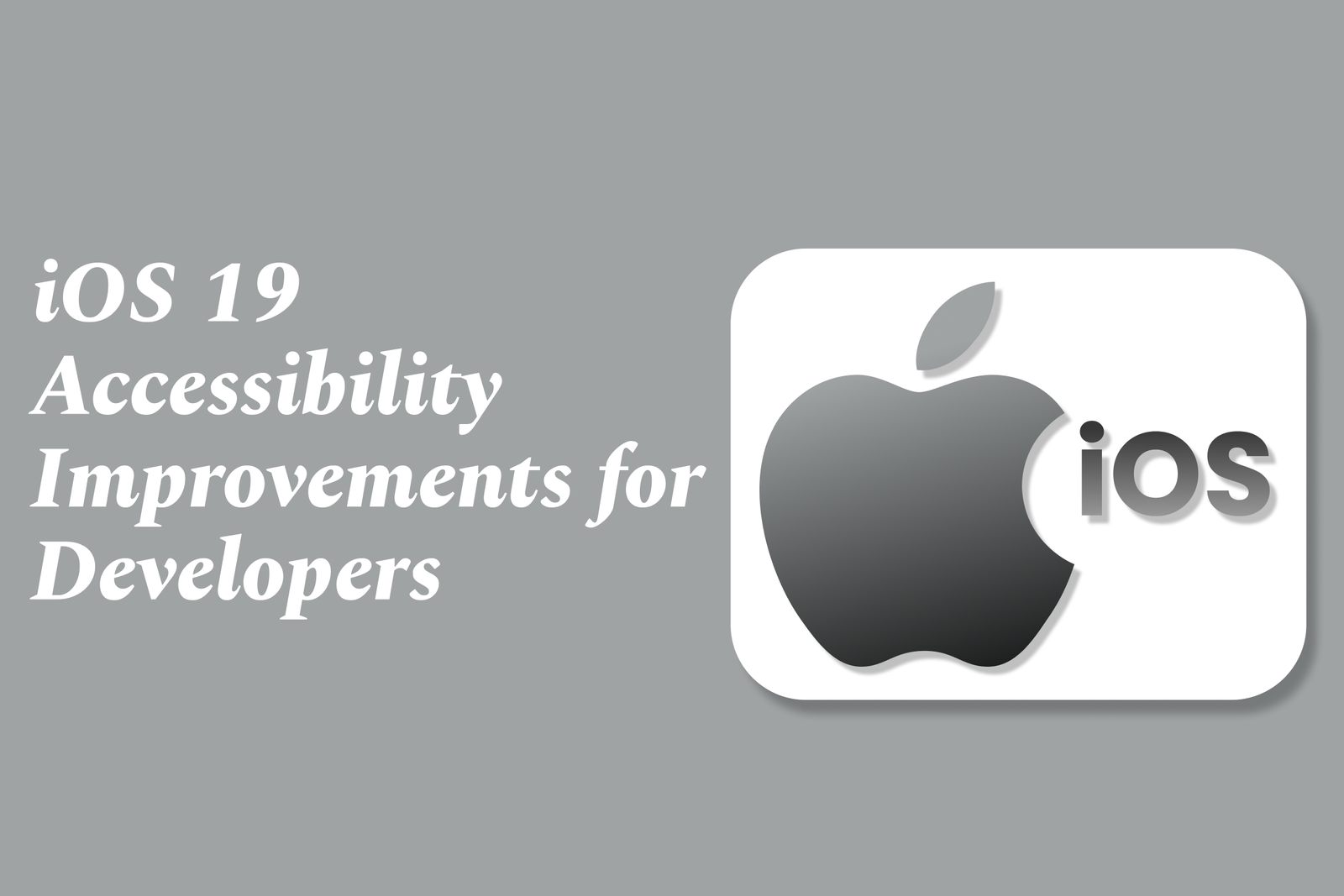IOS 19 accessibility improvements for developers
iOS 19 enhances accessibility with new APIs and features like expanded Voice Control languages, Assistive Access for Apple TV, improved CarPlay sound recognition, and personalized voice creation, empowering developers to build more inclusive, user-friendly apps for diverse abilities.
iOS 19 Accessibility Improvements for Developers
1 ) Overview of iOS 19 Accessibility Enhancements
Apple previewed numerous new accessibility features in iOS 19, benefiting both users and developers. Key highlights include improved personalization, expanded device support, and multilingual capabilities, aimed at making Apple devices more inclusive and easier to use for people with diverse needs.
2 ) CarPlay Enhancements
Large Text Support: CarPlay now supports the Large Text accessibility option, previously available only on iPhones, helping users with visual impairments.
Expanded Sound Recognition: CarPlay can notify users inside the vehicle about specific sounds, such as a crying baby, in addition to external alerts like sirens and horns—offering enhanced safety and awareness for deaf or hard of hearing drivers and passengers.
3 ) New Accessibility Features for Users
Background Sounds: Customizable EQ settings, timers, and shortcut automations help reduce distractions and may assist users with tinnitus.
Personal Voice: Creates a natural sounding voice within a minute using on device AI with 10 phrases, now supporting Spanish (Mexico).
Eye and Head Tracking: Enables users to control iPhone and iPad using eye movements (with switch or dwell selection) or head movements.
Brain Computer Interfaces (BCIs): Support via a new Switch Control protocol assists users with severe mobility disabilities.
Assistive Access: Simplified Apple TV app experience and APIs for developers to build tailored apps for users with intellectual and developmental disabilities.
Music Haptics: Customization allows users to feel haptics for vocals only or entire songs with adjustable intensity.
Sound Recognition and Voice Control: Adds name recognition alerts and a programming mode in Xcode with expanded language support including Korean, Arabic, Turkish, Italian, various forms of Spanish and Mandarin, English (Singapore), and Russian.
Live Captions: Expanded support includes multiple languages and dialects such as English variants (India, Australia, UK, Singapore), Mandarin Chinese, Cantonese, Spanish, French, Japanese, German, and Korean.
4 ) Developer Opportunities and APIs
Apple is providing new APIs and simplified processes, such as Assistive Access APIs for Apple TV, to allow developers to create more personalized and accessible apps. The enhancements in voice control programming in Xcode and sound recognition broaden developer capabilities to make software that better serves users with disabilities.
Summary:
iOS 19 introduces substantial accessibility improvements for users with disabilities along with developer tools and APIs to create more inclusive apps and experiences. CarPlay's new features, enhanced voice and sound recognition, eye/head control, and support for BCIs highlight Apple's commitment to accessibility in its ecosystem.
https://justacademy.in/news-detail/android-new-api-releases
https://justacademy.in/news-detail/android-touch-gesture-enhancements
https://justacademy.in/news-detail/future-of-flutter-careers-post-2025
https://justacademy.in/news-detail/flutter-beta-features-worth-exploring
https://justacademy.in/news-detail/android-sdk-tool-updates
Related Posts
Java supports GDPR and data privacy by enabling secure data handling through encryption, controlled access, and precise data management. It allows developers to minimize PII exposure, ensure data confidentiality, and design workflows that comply with data protection regulations effectively.
Java code quality tools have evolved to include advanced static analysis, integrated security checks, and AI-powered code reviews. These updates help developers detect bugs, enforce coding standards, and enhance security, streamlining the development process and improving overall code reliability.
Java remains a cornerstone in big tech companies, evolving with modern features like records, pattern matching, and virtual threads. Its robust ecosystem, enhanced performance, and growing AI integrations keep it vital for both legacy systems and innovative new projects.
Java and CI/CD pipeline optimizations streamline Java application development by automating builds, tests, and deployments. They improve efficiency through parallelization, caching, and secure secrets management, enabling faster feedback loops and more reliable, scalable software delivery.
Java supports modern cryptography standards through its flexible Java Cryptography Architecture (JCA), enabling integration of advanced algorithms like AES, EdDSA, and post-quantum tools. Libraries like Bouncy Castle offer FIPS-certified, hardware-accelerated implementations for secure development.
Java 23 enhances record patterns by enabling concise, direct destructuring of record components within pattern matching, simplifying type checks and data extraction. This improvement boosts code readability and expressiveness by reducing boilerplate in handling immutable data classes.
Java remains a top choice for mobile app backends, powering scalable, secure, and high-performance server-side solutions. Latest trends include cloud-native microservices, reactive programming, and enhanced JVM optimizations, enabling efficient, flexible, and robust mobile backend development.
Java SE 24 and LTS Java SE 21 offer enhanced features and performance, while Apache Spark 4.0.0 introduces Scala 2.13 support and advanced ML and SQL capabilities. Together, they empower developers to build scalable, high-performance data applications with modern tools.
JUnit 5 modernizes Java testing with a modular architecture, improved assertions, and seamless Java 8+ support. Beyond JUnit, tools like Mockito and AssertJ enhance mocking and assertions, creating a powerful, flexible ecosystem for writing clean, efficient Java unit tests.
Java plays a pivotal role in cloud automation tools by providing a robust, platform-independent language used to build scalable automation frameworks like Jenkins and Selenium, enabling efficient CI/CD pipelines, testing, and orchestration across diverse cloud environments.










